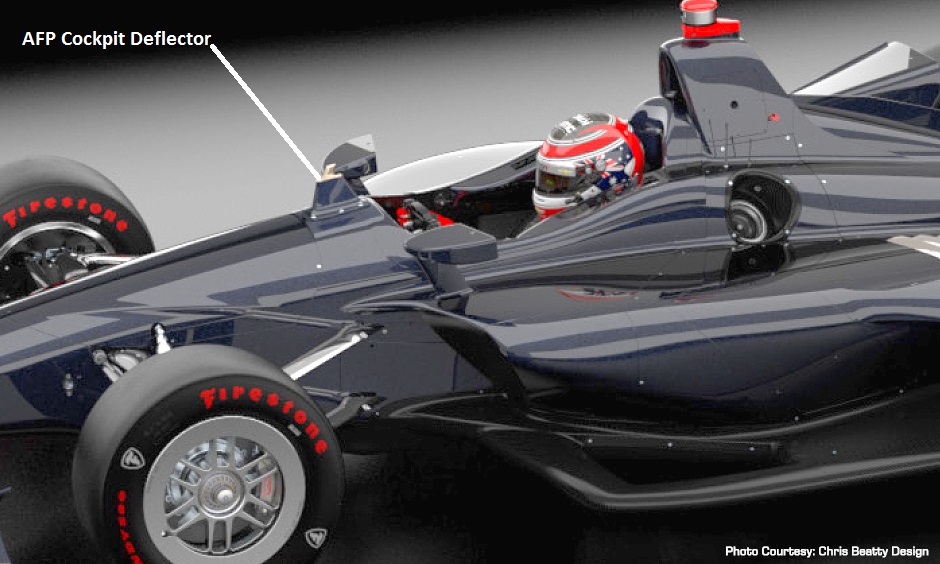INDYCAR to introduce next phase of cockpit safety (Update)
 |
| A full Halo will not work on the current IndyCar tub but the AFP 'nub' has been added. The Windscreen is not working out and nothing short of a full Halo must be the goal. |
UPDATE A reader asks, Dear AR1.com – How come IndyCar did not add a full Halo to the cars instead of that useless 3 inch nub? Wayne Right
Dear Wayne, We told out readers the windscreen would not work and that IndyCar should go with the Halo instead, but they wasted two years focusing on the Halo only to find it is inadequate. All other open wheel series could afford a new chassis and were able to roll them out designed with mounting points for the Halo.
However, with two years of time wasted, IndyCar won't be able to add the Halo until 2021 when the new chassis is due out. Besides, IndyCar teams could not afford a new chassis even though it's an old dog now, having been in place since 2012. With TV ratings on NBCSN so low, sponsor money in the paddock is scare despite the stock market being near an all-time high.
Patricio O'Ward is a case in point. The talented kid cannot find enough sponsorship for a full-time ride. Guys like Santi Urrutia gave up on making it to IndyCar after spending a few years on the Road-To-Indy ladder and winning…..he could not afford to buy his ride to IndyCar.
So the bottom line is this – IndyCar drivers deserve a full Halo for protection, but all they got was a nub. At first we thought it was an April Fool's joke, but then we realized it was still February. It does have one use however, for the driver to hang their steering wheel on when the enter and exit the car. It even has a little hook on the top to prevent your steering wheel from sliding off. Mark C.
02/19/19 No it's not April Fool's Day.
INDYCAR announced today the planned introduction of the next step to improve cockpit safety for all drivers in the NTT IndyCar Series.
All cars participating in an April 24 open test on the Indianapolis Motor Speedway oval will be fitted with Advanced Frontal Protection (AFP), a titanium piece made by Dallara.
AFP, which stands a little more than 3 inches tall and averages three-quarters of an inch in width, is designed to deflect debris away from the driver. It will be positioned in front of the cockpit, along the chassis centerline. The piece has passed the same strength tests as Dallara's roll hoop.
Versions of AFP have been explored through on-track and simulator testing since 2012. New technology made this a practical option now.
NTT IndyCar Series teams received information about the planned AFP adaptation today. All cars entered in the 103rd Indianapolis 500 presented by Gainbridge in May will be fitted with the piece, and they will carry it through the rest of the season.
"Safety is a never-ending pursuit, and this is INDYCAR's latest step in the evolution," INDYCAR President Jay Frye said. "There are more details to come about the phases to follow."
A halo-type device was considered, but it cannot be fitted to the current version of INDYCAR's chassis.
INDYCAR has done extensive testing with a windscreen developed in conjunction with PPG Aerospace, including on-track sessions at ISM Raceway and Indianapolis Motor Speedway in 2018. Neither driver who tested the windscreen reported problems, but recent testing at PPG's facility in Huntsville, Alabama, proved that work remains before it can be used.
The AFP will not protect the driver when the car gets up into the lethal catch fencing – only a Halo, or full canopy, would help
